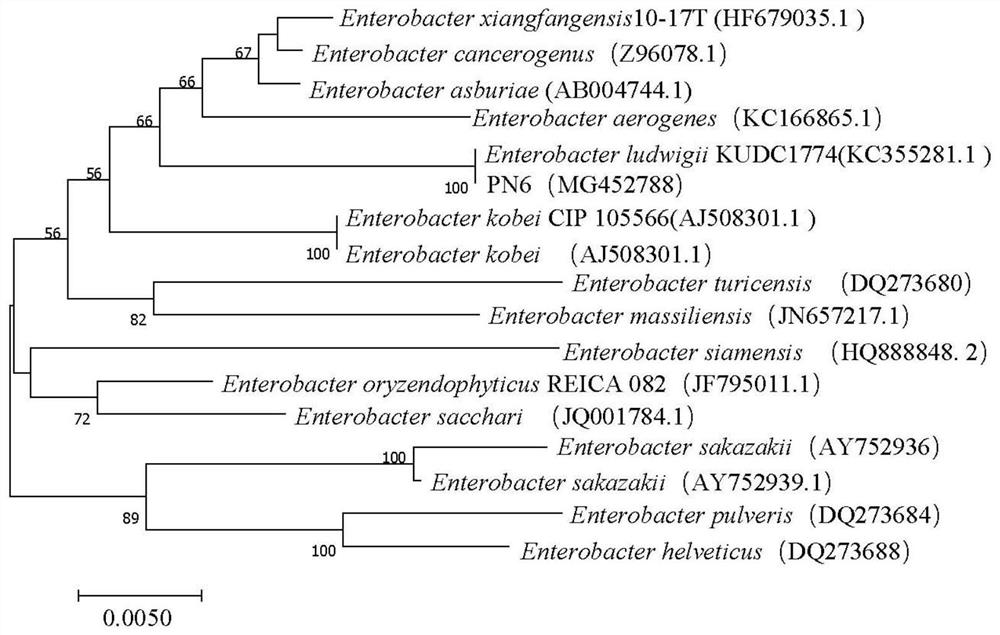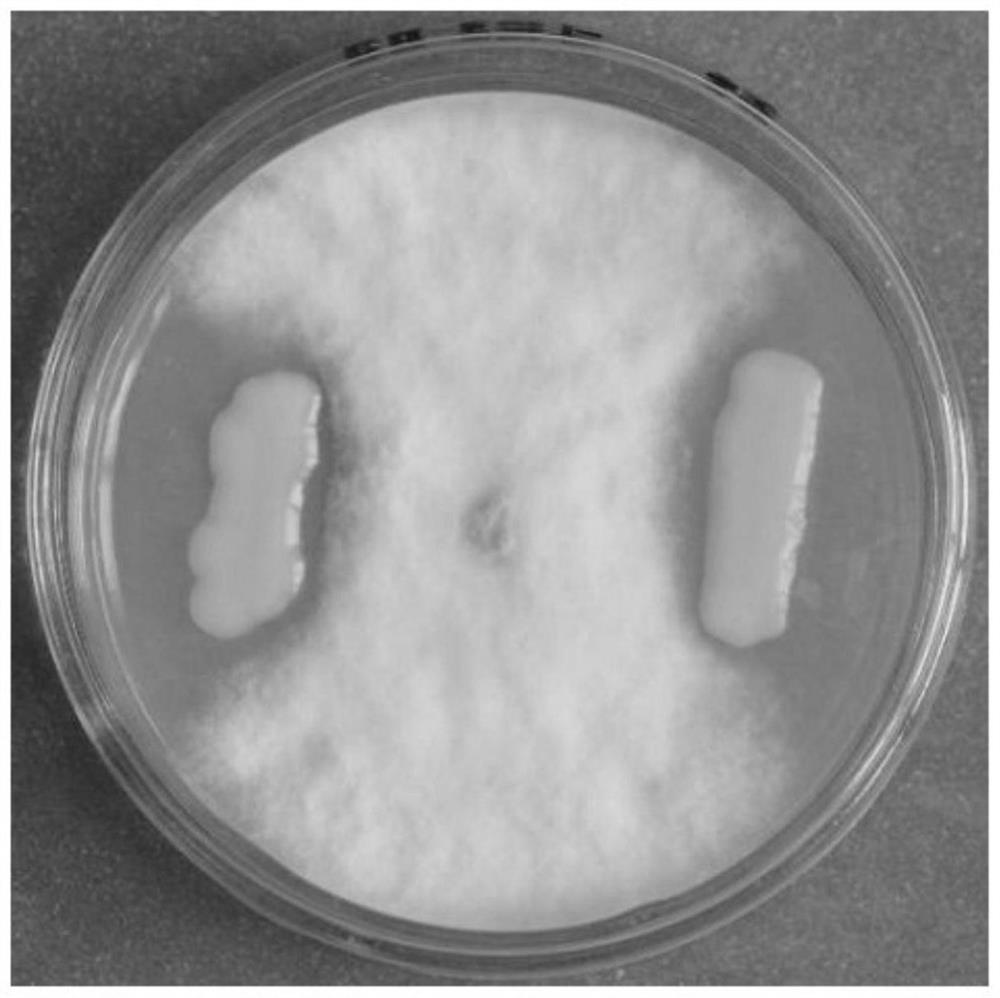A strain of Enterobacter ludwig pn6 and its application
A technology of Enterobacter ludwigii and Enterobacter ludwigia, applied to Enterobacter ludwig PN6 and its application fields, to achieve the effects of excellent strain resources, growth promotion, and strong phosphorus-solubilizing ability
- Summary
- Abstract
- Description
- Claims
- Application Information
AI Technical Summary
Problems solved by technology
Method used
Image
Examples
Embodiment 1
[0025] Example 1: Isolation and identification of endophytic bacteria PN6 from Phyllostachys pubescens
[0026] The three- to four-year-old moso bamboos with good growth were selected from the moso bamboo plantations in Dagang Forest Farm, Guanshan Forest Farm and Jinggangshan Dajing Forest Farm in Yichun City, Jiangxi Province, respectively. The topsoil was removed, and the root system of Moso bamboo was dug out with a shovel to collect the fine roots of Moso bamboo. Rinse the root system of moso bamboo with distilled water for 3 times, and carry out surface disinfection according to the following steps: soak in 75% v / v alcohol for 1 min, soak in 3.25% v / v sodium hypochlorite for 3 min, soak in 75% v / v alcohol for 30 seconds, and then rinse with sterile water for 3 times . Grind the treated root tissue and collect the grinding liquid. Coat the NA plate with sterile water after the last rinse (the formula of NA medium: 3g of beef extract, 10g of peptone, 5g of NaCl, 16g of ag...
Embodiment 2
[0033] Embodiment 2: Bacterial strain PN6 is to the endogenous antagonism of Phyllostachys pubescens blight pathogenic bacteria
[0034] Use a hole puncher (diameter=5mm) to get the bacteria cake at the edge of the colony of the pathogenic bacteria C.phyllostachydis (C.phyllostachydis) of Phyllostachys pubescens for 5 days, and connect it to the center of the PDA plate, and mark the bacterial strain to be tested activated with the NA slope The line was inoculated on both sides of the PDA plate, and only the pathogenic bacteria were inoculated as the control (CK), and each treatment was replicated three times. Incubate at 28°C for 4 days to observe the presence or absence of the bacteriostatic zone, and measure the width of the bacteriostatic zone.
[0035] Inoculate the Enterobacter ludwigia PN6 with better bacteriostasis in the plate confrontation test on NB medium (the formula of NB medium: beef extract 3g, peptone 10g, NaCl 5g, distilled water 1000mL, pH 7.2, mix well and the...
Embodiment 3
[0039] Embodiment 3: Determination test of bacterial strain PN6 phosphorus-dissolving ability
[0040] Enterobacter PN6 was inoculated on NBRIP solid medium (glucose 10g, Ca 3 (PO 4 ) 2 5g, MgCl 2 5g, KCl 0.2g, MgSO 4 .7H 2 O 0.25g, (NH 4 ) 2 SO 4 0.1g, distilled water 1000mL, agar 15g, mix uniformly and sterilize to obtain), cultivate for 4 days and observe whether phosphorus-dissolving circles are produced. The phosphate-solubilizing ability of Enterobacter ludwigs PN6 was quantified using the method of Pikovskaya et al. Enterobacter PN6 was shaken and cultivated in NB medium for 24 hours, inoculated into a 100mL Erlenmeyer flask containing 50mL of NBRIP culture solution at an inoculum size of 1% v / v, and connected to the NBRIP culture solution of the same volume of blank seed solution (no access to strains) as a control. Each inoculation treatment was repeated five times, 30°C, 180r / min shaking culture for 6 days, the fermentation broth was centrifuged for 10min...
PUM
 Login to View More
Login to View More Abstract
Description
Claims
Application Information
 Login to View More
Login to View More - R&D
- Intellectual Property
- Life Sciences
- Materials
- Tech Scout
- Unparalleled Data Quality
- Higher Quality Content
- 60% Fewer Hallucinations
Browse by: Latest US Patents, China's latest patents, Technical Efficacy Thesaurus, Application Domain, Technology Topic, Popular Technical Reports.
© 2025 PatSnap. All rights reserved.Legal|Privacy policy|Modern Slavery Act Transparency Statement|Sitemap|About US| Contact US: help@patsnap.com



